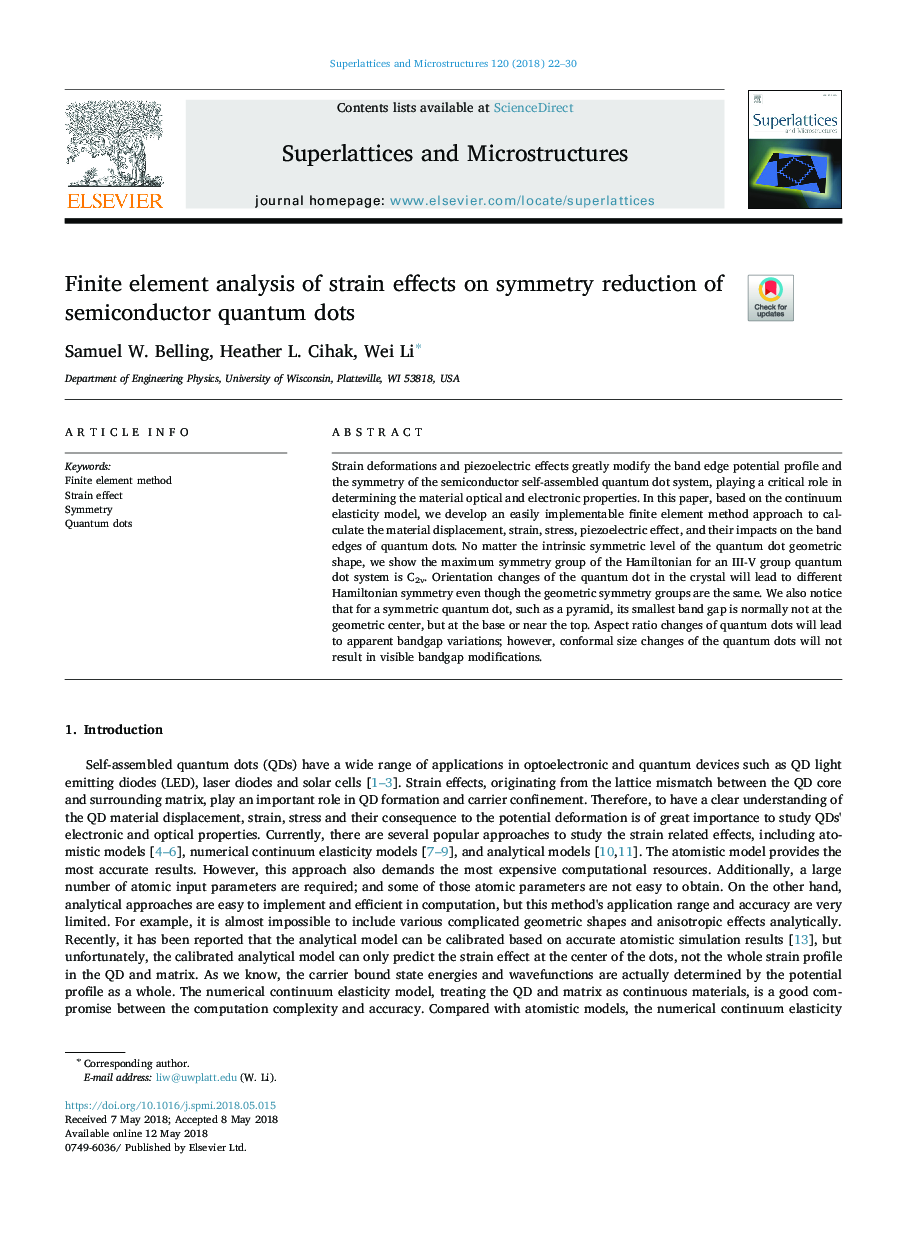| Article ID | Journal | Published Year | Pages | File Type |
|---|---|---|---|---|
| 7938472 | Superlattices and Microstructures | 2018 | 9 Pages |
Abstract
Strain deformations and piezoelectric effects greatly modify the band edge potential profile and the symmetry of the semiconductor self-assembled quantum dot system, playing a critical role in determining the material optical and electronic properties. In this paper, based on the continuum elasticity model, we develop an easily implementable finite element method approach to calculate the material displacement, strain, stress, piezoelectric effect, and their impacts on the band edges of quantum dots. No matter the intrinsic symmetric level of the quantum dot geometric shape, we show the maximum symmetry group of the Hamiltonian for an III-V group quantum dot system is C2v. Orientation changes of the quantum dot in the crystal will lead to different Hamiltonian symmetry even though the geometric symmetry groups are the same. We also notice that for a symmetric quantum dot, such as a pyramid, its smallest band gap is normally not at the geometric center, but at the base or near the top. Aspect ratio changes of quantum dots will lead to apparent bandgap variations; however, conformal size changes of the quantum dots will not result in visible bandgap modifications.
Related Topics
Physical Sciences and Engineering
Materials Science
Electronic, Optical and Magnetic Materials
Authors
Samuel W. Belling, Heather L. Cihak, Wei Li,
